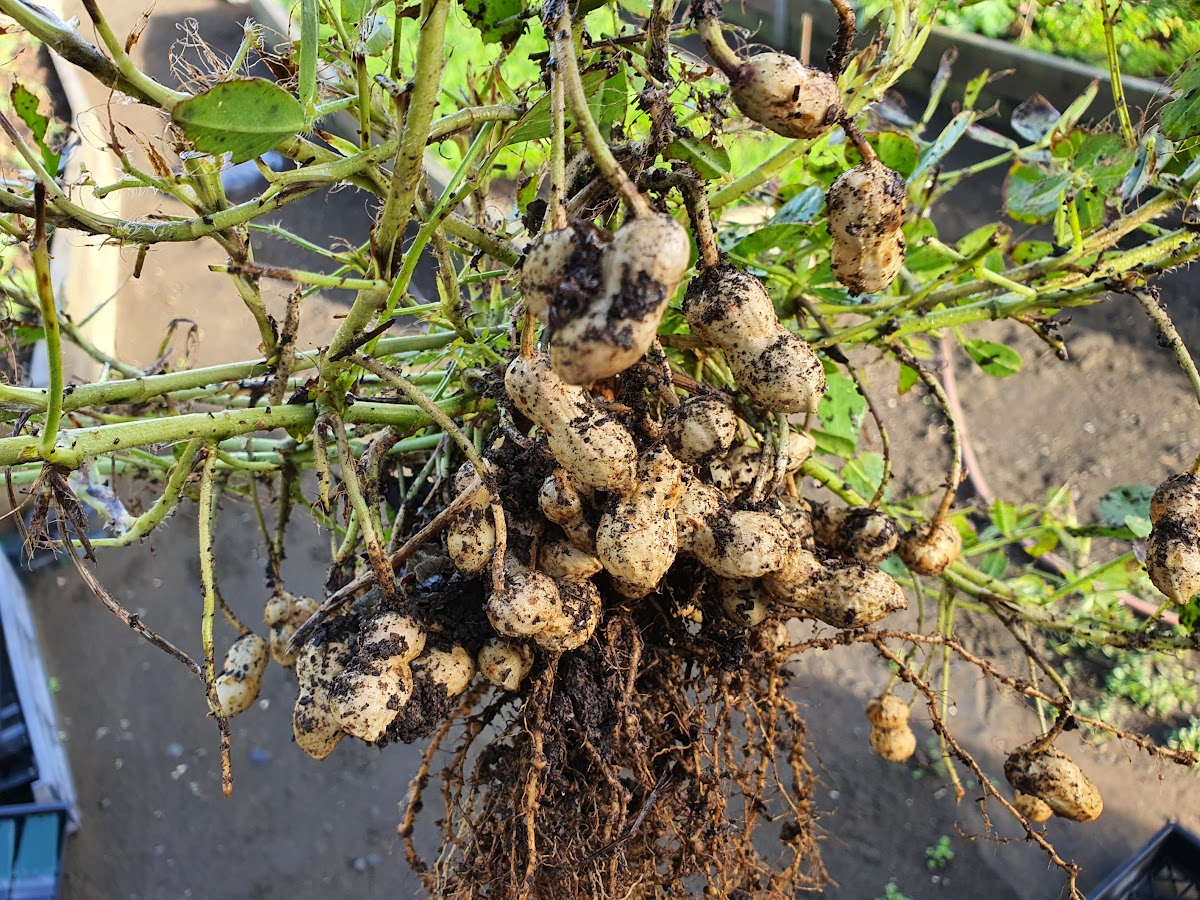How to grow peanuts

Grow the nut that grows underground.
WORDS & PHOTOS SARAH O’NEIL
When you think of nuts, peanuts spring to mind. In fact, they’re not a nut but a legume, so peanuts are more closely related to beans than cashews or hazelnuts. The other misconception around peanuts is the belief they grow in trees like all the other nuts. It can come as a bit of a surprise to discover that not only do they grow underground, but they can also be easily grown at home.
Peanuts (Arachis hypogaea), also known as groundnuts, originate from the northern part of South America, with Brazil, Peru and Argentina all considered possible homelands. They have been cultivated for thousands of years and have been found in ancient Inca graves as food for the afterlife. The Spanish explorers took them back to Europe, and from there they spread across the world.
They were first introduced to New Zealand as part of that global spread, when the settlers first arrived here in the 18th century with a collection of seeds for their potential food supply. They never really took off as a commercial crop as they prefer a much warmer tropical and subtropical climate than New Zealand can offer, and so peanuts were limited to tenacious growers on a small scale. Through importation, they have become a national staple, and we would be lost without our peanut butter or peanut slabs!
GROWING PEANUTS
Peanuts are becoming more popular to grow, and many garden centres and seed sellers are offering peanut plants and specialty peanut varieties. However, the easiest way to get hold of some seeds is by picking up some raw peanuts from the baking aisle of the supermarket.
Preferring a long hot summer, they can take up to 5–6 months to mature.
If your area isn’t quite warm enough, they can be grown in a container in a greenhouse or warm sheltered spot.
As a frost-tender plant, it is best to wait until all risk of frost has passed and the soil temperatures are at least 18°C, although they can be started indoors in seed trays to give them a head start.
Sow seeds 5cm deep into well-drained soil with plenty of organic material in a spot that receives full sun. Allow a generous amount of spacing (50–75cm apart) as the growth habit is low and spreading and they will soon fill the space. Avoid overwatering while peanuts are germinating to prevent rotting. Once they are up and growing, give plants a regular deep watering, especially in the heat of summer.
Mulch thickly to suppress the weeds and help retain moisture in the soil. Mounding soil around the plant as it grows can increase the harvest. As a legume, peanut plants fix their own nitrogen but will benefit from a liquid feed from time to time throughout the long growing season.
Yellow flowers will form. Once pollinated, these will send down a shoot called a ‘peg’, which pushes below the soil surface and forms the peanuts at its tip.
In the autumn, the leaves will turn yellow and begin to die. This is a sign it is time for harvest. With a fork, dig up the whole plant and shake it to remove the dirt. Leave upside down in a sunny spot to dry for 3–4 days. Remove the nuts and bring them into the kitchen. A single plant typically produces 25 or more (sometimes a lot more) peanuts, depending on the soil and weather conditions.
IN THE KITCHEN
Store your freshly harvested and dried peanuts in an airtight container. Remove the shell and eat them raw or roasted, or make your own peanut butter. Many international cuisines have recipes that include peanuts, and a quick internet search will give you plenty of exciting options.
